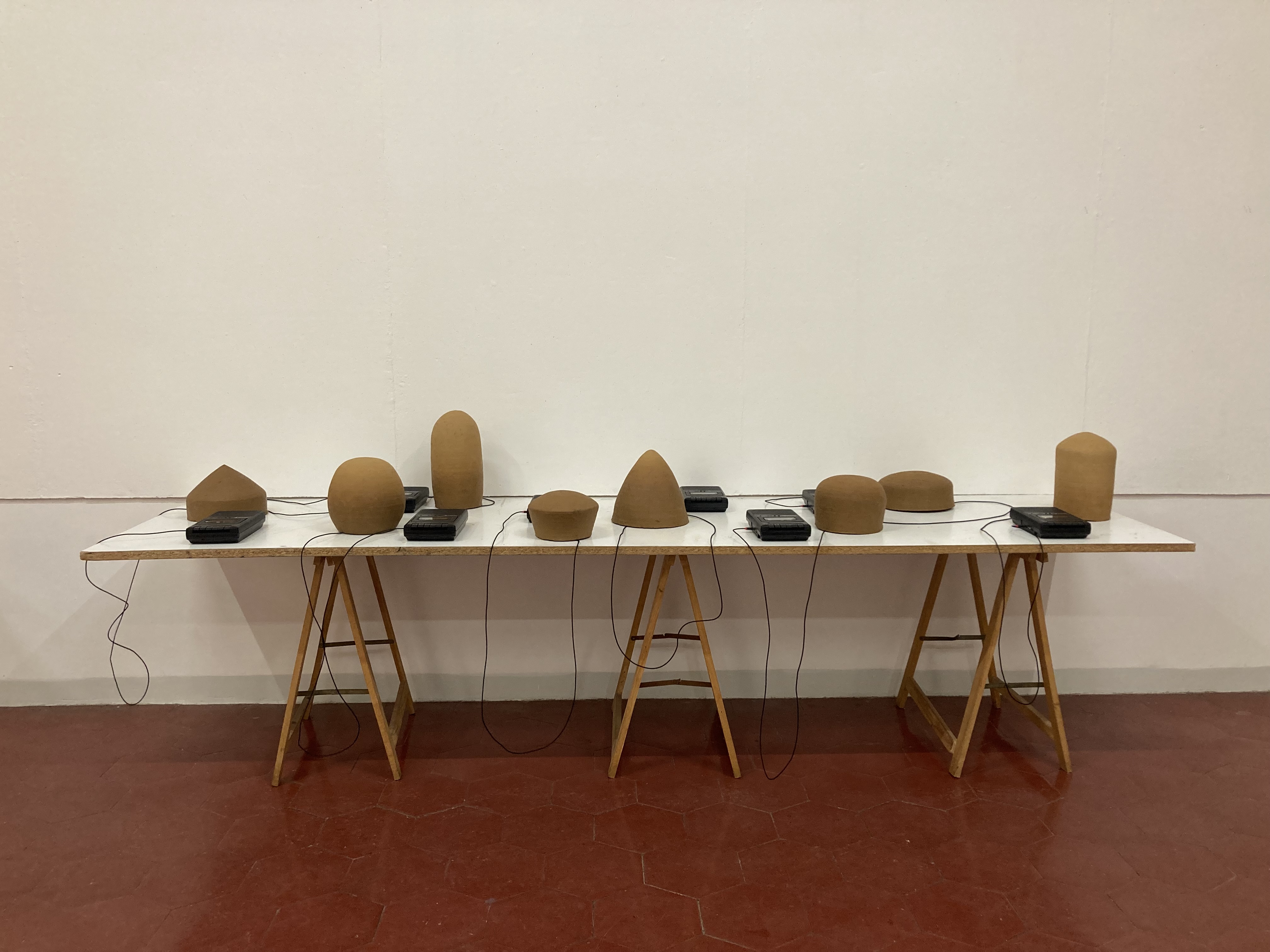Portfolio
Assistant Professor in Music Composition and Sound Practices
The University of Chicago
Devotions / 2022
violin, cello, & harmonium
commissioned by longleash (Pala Garcia, John Popham, & Julia Den Boer)
supported by New Music USA
link to score ︎
recorded by longleash, August 13, 2022 at The Loretto Motherhouse, Nerinx, Kentucky
In Devotions, I drew on a 13th motet, Ne m'a pas oublié, extracting little melodic strands, turns of phrases, and harmonic slices, fusing them with my own expressions and sensibilities. The motet and my own music had considerable overlap—lulling, narrowness, smearing, repetitiveness, and serenity. But what was new for me, yet native to the motet, was the assemblage of and engagement with historical musical materials. In medieval motets the bottom voice is borrowed from plainchant and often altered. In Ne m'a pas oublié, for instance, the Easter gradual Haec dies is excerpted into fragmented phrases which are structured anew to form the tenor line. I composed with a similar attitude, excavating and reworking snippets and contours of this motet to make my own music, borrowing with a very light touch, keeping the motet more in my peripheral vision, strewn on the floor, tacked to the wall, than "on the stand" in front of me. In the process, historical meanings and materials become renovated and warped, the voices becomes voiceless. Yet, a sense of singing remains in the phrasing, range, and expression. This sort of "inbetweenness"—here, between instrument and voice—is a hallmark of motets: they flicker between the divine and earthly, the eternal and now, the cantor and troubadour.

Terrasong / 2023
sound sculpture
eight clay vessels (made by Ajay Manthripragada) with microphone feedback played back on speakers and looped cassette tapes
audio ︎
photo documentation ︎
The architect Ajay Manthripragada and I share an interest in architectural terracotta. When we met, Ajay was looking at roof tiles in Rome, using their coupled imbrex-tegula structure as a point of departure for new design possibilities. I was looking at resonant vessels used to shape the acoustics of churches in the Middle Ages. Ajay and I decided to mold our respective interests into one, building terracotta forms that would sing. The basic idea was to create hollow enclosures from clay and illuminate their natural resonance through a simple feedback system using a microphone and a small speaker inside each clay vessel, creating feedback that made their dimensions and materials audible, revealing their inner voices. The openings of the vessels were positioned at their bottoms so that what sounded from speakers inside of them was filtered through the clay. Feedback sounds from each vessel were recorded onto magnetic tape, another physical and pliant material, and played back inside the very same vessels. But what sounded did not re-resonate in quite the same way from day to day. Ajay's unfired clay was changing, drying and shrinking, imprinted with fingerprints and dented from moving. The sound began to change too. The fragile strips of tape spun along the wheels of the looped cassettes slowly disintegrated one by one, falling apart, leaving only the gentle breathing of tape machine noise to sound within the clay forms.
Reliquary Grammar / 2025
album and short film
Performed and recorded by Mary Stephen (piano), Keir GoGwilt (violin), Catalina Alvarez (voice), Jack Langdon (organ), Kristopher Svensson (kacapi), David Lackner (saxophone), John Popham (cello), Anthony Vine (electric guitar, piano, harpsichord, field recordings)
Film by Max Levin
Created with the generous support of the Camargo Foundation.
I wrote the music to Reliquary Grammar in a two-story stucco studio in Cassis, a small port town in the Côte d'Azur. Inside, a vaulted ceiling of gritty pale bricks hovered over shelves of dusty LPs and tattered scores, bloated antique tables with dark benches, and a harpsichord inlaid with feathered script. Beckoned by the antique keyboards, I began embracing expressions of yesteryear, like baroque idioms, rustic plucking, and elegiac chanson, a music for the French parlor I found myself in. I recorded and collected my ephemeral musings at these instruments, improvisations and ideas with the raw energy of something coming into being, not quite finished or refined. I collected and preserved these moments alongside those from my time spent traveling to medieval churches. Footsteps moving across a cobblestoned nave, innocuous chant pumped through white cylindrical speakers, and bells reflecting along the passages of Arles sat alongside the sounds of Mediterranean birds, mistral winds, and foaming waves wafting through my studio windows. Later, the filmmaker Max Levin made a short film that followed the full album. He too used a personal archive—camcorder footage of a trip to Spain and Portugal, following his friend Nat, a poet, who carried around a bag of avant-garde books and placed them in unlikely places. Pages flap in the middle of pyramidal medians, Fluxus periodicals are spread out in the sun, books are laid in circular patterns along a staircase. The film and album remind us that material records are mere glimpses of life's multiformity and sensuousness. We cling to them, gathering and cataloguing them restlessly, as Robert Darnton says, "if only for the possibility that traces of the soul can be found in boxes in the archives."